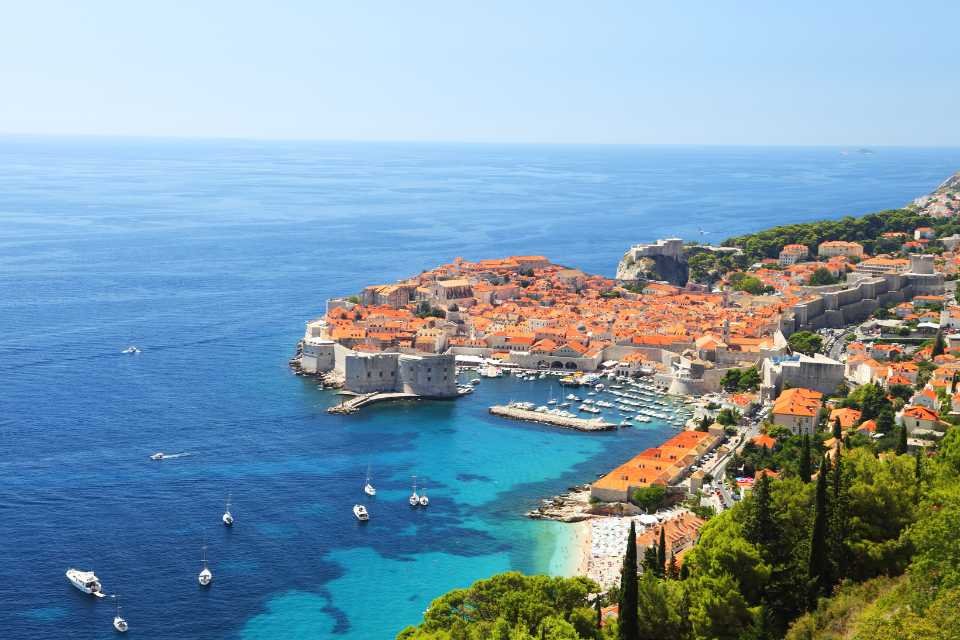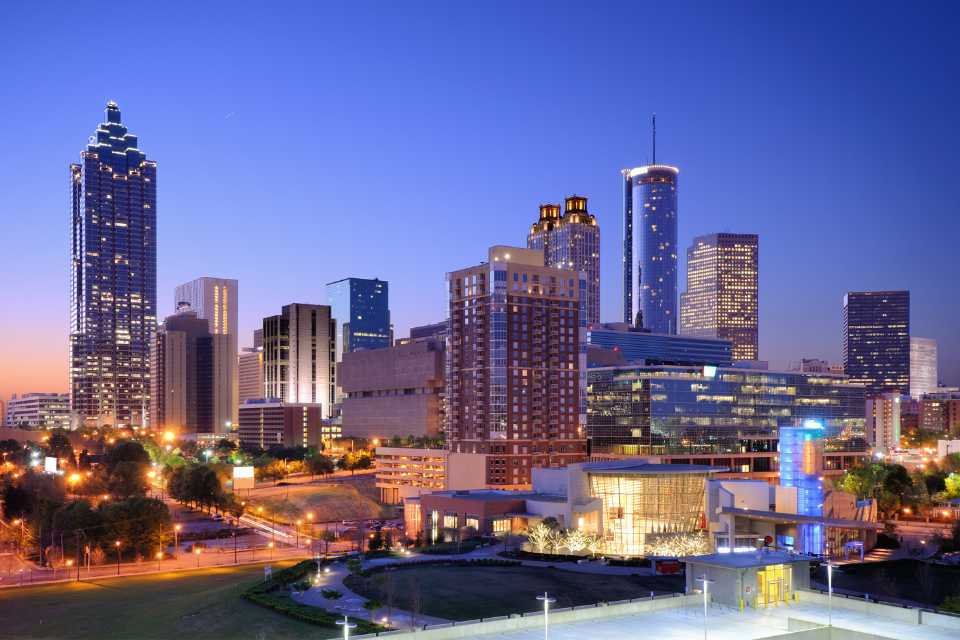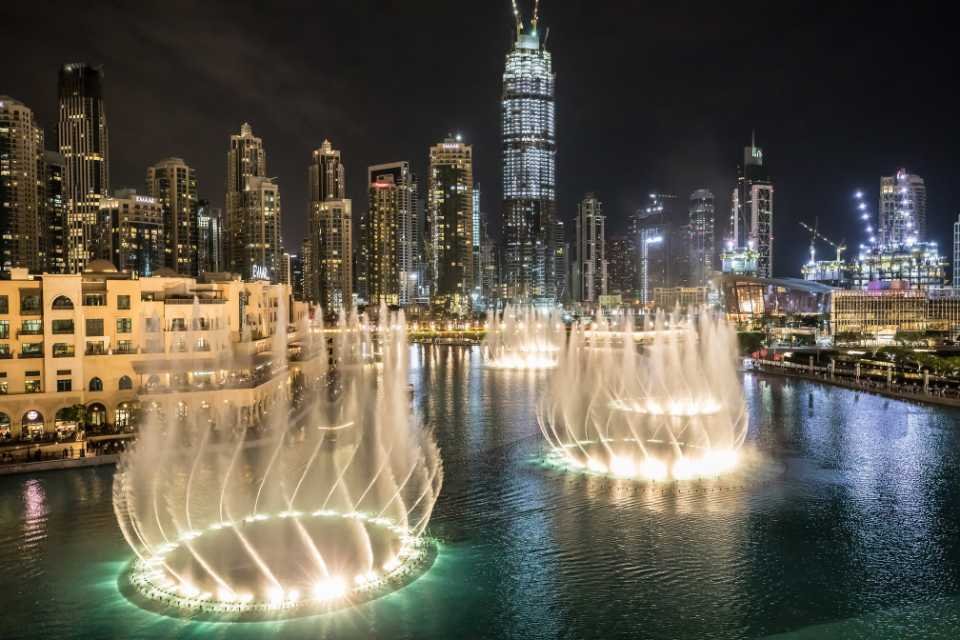The best time to visit Dubrovnik: A month-By-month guide
An overview of the best time to visit Dubrovnik
If you're planning a trip to Dubrovnik, one of the most important decisions you'll make is when to visit. With its stunning Adriatic coastlines, rich cultural heritage, and interesting local events, it's no wonder that so many people flock to Dubrovnik each year.
But with so many things to consider, it can be difficult to decide on the best time to go. To help you make the right choice, this blog post provides a month-by-month guide of Dubrovnik, explaining the best time to visit, important events, and weather information.
Related reading: The ultimate Dubrovnik travel guide
January – February: Winter in Dubrovnik
If you're looking for a quieter time to visit Dubrovnik, consider visiting during the winter months of January and February. While the temperature may be a bit cooler, it's a great time to explore the city without the hustle and bustle of peak season.
One of the most popular events held during this time is the Dubrovnik Winter Festival, which features music, theater, art exhibitions, and traditional Croatian food and drink. The festival offers locals and visitors alike an opportunity to enjoy the culture of Dubrovnik at its finest.
Weather-wise, temperatures range from an average low of 7 degrees Celsius (45 F) to an average high of 13 degrees Celsius (55 F). Average rainfall is quite high during this time, so be sure to bring an umbrella or rain jacket with you if you plan to explore the city on foot.
For those looking for a quieter time to explore Dubrovnik, winter can be a great time to visit. With mild temperatures and fewer crowds, it's a great opportunity to take in the beauty of the city.
March – April: Spring in Dubrovnik
The spring months of March and April are a great time to visit Dubrovnik! The temperatures are pleasant during this time, usually ranging from 10 to 20 degrees Celsius. This is a great time for sightseeing, as many of the popular attractions are open. Popular activities during this time include exploring the Old Town, taking part in historic walking tours, and checking out the museums.
This is also the perfect time for outdoor activities such as swimming and sunbathing at the nearby beaches. Dubrovnik also has some stunning natural scenery to explore, including the nearby Elaphiti Islands.
If you're looking to enjoy some of the local culture and traditions, there are several events and festivals held during this time. These include Easter and Carnival celebrations as well as theatre performances and live music concerts. There are also numerous restaurants serving up delicious Croatian cuisine for you to sample!
With mild temperatures and plenty of things to do, March and April are a great time to experience Dubrovnik in all its glory!
Read next
May – June: Summer in Dubrovnik
For those who want to experience the best of Dubrovnik in the summer months, May and June are ideal times to visit. Temperatures start to warm up to the mid-twenties and stay there throughout the summer months. The sea is also warm and inviting, making it the perfect time for a beach holiday.
The days are longer in the summertime, meaning more time to explore this stunning city. With its stunning architecture, beautiful beaches, and vibrant nightlife, there is no shortage of things to do and see. From visiting historic sites like the City Walls and old town streets, to partying on the beach at one of Dubrovnik’s many beach bars – you won’t run out of activities here!
A great activity for these sunny but slightly cooler months is a Dubrovnik Game of Thrones walking tour. Much of the epic series was filmed in Dubrovnik, so you can see some of the iconic locations from George R R Martin’s world with help from a local guide.
In June, the city hosts a number of popular events that draw people from around the world. Some of the most notable include the Libertas Film Festival and the International Music Festival. This is also the peak season for sightseeing, so be sure to book your tickets early if you’re planning a trip in June.
With its endless sunshine, beautiful beaches, and endless activities, Dubrovnik in the summertime is an absolute must-visit. Whether you’re looking for some beach time, nightlife fun, or historical sights, you won’t be disappointed with what Dubrovnik has to offer.
July – August: Peak season in Dubrovnik
For many travelers, the peak of summer is the ideal time to visit Dubrovnik. The months of July and August offer some of the best weather in the region and it’s a great time to enjoy the city’s beaches and attractions.
The average temperature during the summer is around 27°C, with plenty of sunshine and long days. July and August are also the busiest months for tourism, so expect the streets to be full of people and a vibrant atmosphere.
If you’re looking for culture and events, there’s no shortage of festivals and celebrations taking place in Dubrovnik during the summer months. From the popular Summer Festival in July to the Festival of St Blaise in August, you’ll be able to find plenty of exciting activities to keep you entertained.
The downside of visiting Dubrovnik in peak season is that prices tend to be higher than usual, with hotels and other attractions charging a premium. So if you’re looking for a more budget-friendly option, it may be better to plan your trip for another time of year.
No matter when you choose to visit, Dubrovnik is sure to provide an unforgettable experience. With its stunning beaches, fascinating history, and vibrant culture, it’s one of the most beautiful cities in Europe.
Read next: The best things to do in Dubrovnik
September – October: Autumn in Dubrovnik
Autumn is a great time to visit Dubrovnik. The weather is mild and the crowds are far smaller than in peak season, making it ideal for sightseeing and exploring the city’s attractions.
The temperatures in autumn range from 18-24 degrees Celsius (64-75 Fahrenheit). Rainfall is light and unpredictable, so be sure to pack a raincoat and umbrella just in case. The days are long and sunny, making it perfect for outdoor activities such as cycling, walking, or hiking.
During this time, the beaches are still open and perfect for swimming, though the water can be chilly. There are also some great festivals and events that take place in autumn, including the Dubrovnik International Film Festival and the annual marathon.
Accommodations tend to be cheaper in autumn due to fewer visitors and less demand. Whether you want to stay in a hostel or a luxury hotel, there are plenty of options available.
The warm temperatures, fewer crowds, and range of activities make autumn an ideal time to visit Dubrovnik.
November – December: Autumn / Winter in Dubrovnik
If you’re looking for a unique winter destination, then Dubrovnik is the place to be. During the winter months of November and December, the city is at its most tranquil, with the crowds largely absent and the scenery full of festive cheer.
November marks the beginning of the winter season in Dubrovnik and there are a few key events that take place during this month. Every year, Dubrovnik hosts the Advent Festival, which takes place in mid-November and sees locals and tourists alike gathering in Stradun, the main street of Dubrovnik’s old town. Here, you’ll find delicious local food, traditional music, and Christmas markets.
December sees the city come alive with lights and decorations as the holiday season kicks off. On Christmas Eve, there is a large procession from the old town to St. Blaise’s Church, where people gather to sing carols and celebrate the holiday.
The weather in Dubrovnik during the winter months can be cold and wet but there is plenty of sunshine and dry spells that make it a great time to visit. The average temperature in December is around 8°C (46°F) with occasional drops below freezing. Snowfall is rare but possible in December so make sure to pack warm layers if you plan to stay during this time.
With fewer visitors in town and lower prices, winter is a great time to explore Dubrovnik’s cobbled streets and architectural wonders. So if you’re looking for a unique winter destination with plenty of festive charm, Dubrovnik should be top of your list.
What is the best month to visit Dubrovnik?
The best time to visit Dubrovnik is arguably May-June or September-October. During these months, the weather is mild and the city is relatively less crowded. May-June has slightly warmer temperatures and longer days while September-October usually has a milder climate and fewer tourists.
In May-June, Dubrovnik's average temperature ranges from 20 to 25 degrees Celsius (68-77 Fahrenheit), with around 10 hours of daylight each day. This is the perfect time for outdoor activities such as swimming, sailing, and sightseeing. The Dubrovnik Summer Festival takes place during this time, so visitors can enjoy live performances, concerts, art exhibitions, and more.
September-October is just as pleasant, but typically with a little less sunshine than May-June. Temperatures usually range from 18-25 degrees Celsius (64-77 Fahrenheit), with up to 9 hours of daylight. This time is great for those who want to explore the city at a slower pace, as there are usually fewer crowds.
Overall, the best time to visit Dubrovnik is dependent on individual preferences. If you're looking for warm weather and vibrant activities, May-June may be your best bet. If you prefer quieter days with fewer people around, September – October would be ideal. No matter when you decide to go, you're sure to have an unforgettable experience in this beautiful Croatian city.



















